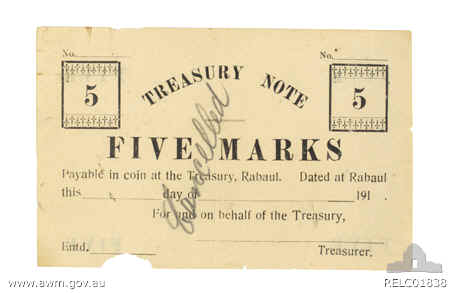New Guinean Mark on:
[Wikipedia]
[Google]
[Amazon]
 The Mark (
The Mark (
 In 1894, the Neu-Guinea Companie issued bronze 1, 2 and 10 Pfennig and silver ½, 1, 2 and 5 Mark coins, followed by gold 10 and 20 Mark pieces in 1895.
In 1894, the Neu-Guinea Companie issued bronze 1, 2 and 10 Pfennig and silver ½, 1, 2 and 5 Mark coins, followed by gold 10 and 20 Mark pieces in 1895.
 The Mark (
The Mark (German
German(s) may refer to:
* Germany, the country of the Germans and German things
**Germania (Roman era)
* Germans, citizens of Germany, people of German ancestry, or native speakers of the German language
** For citizenship in Germany, see also Ge ...
plural: Mark, English plural: marks) was the currency of the colony
A colony is a territory subject to a form of foreign rule, which rules the territory and its indigenous peoples separated from the foreign rulers, the colonizer, and their ''metropole'' (or "mother country"). This separated rule was often orga ...
of German New Guinea
German New Guinea () consisted of the northeastern part of the island of New Guinea and several nearby island groups, and was part of the German colonial empire. The mainland part of the territory, called , became a German protectorate in 188 ...
between 1884 and 1911. It was equal to the German Mark
The Deutsche Mark (; "German mark"), abbreviated "DM" or "D-Mark" (), was the official currency of West Germany from 1948 until 1990 and later of unified Germany from 1990 until the adoption of the euro in 2002. In English, it was typically c ...
, which was also legal tender in the colony.
Initially, only German currency circulated. This was supplemented in 1894 by coins issued specifically for New Guinea. These coins were demonetized on 15 April 1911, in exchange for the German Mark, the only legal tender after that date.
In 1914, during World War I
World War I or the First World War (28 July 1914 – 11 November 1918), also known as the Great War, was a World war, global conflict between two coalitions: the Allies of World War I, Allies (or Entente) and the Central Powers. Fighting to ...
, German New Guinea was quickly occupied by Australia
Australia, officially the Commonwealth of Australia, is a country comprising mainland Australia, the mainland of the Australia (continent), Australian continent, the island of Tasmania and list of islands of Australia, numerous smaller isl ...
. That year, the Australian authorities issued Treasury notes denominated in marks. In 1915, the Mark was replaced by the Australian pound
The pound (sign: £, £A for distinction) was the currency of Australia from 1910 until 14 February 1966, when it was replaced by the Australian dollar. Like other £sd currencies, it was subdivided into 20 shillings (denoted by the symbol s o ...
.
Coins
 In 1894, the Neu-Guinea Companie issued bronze 1, 2 and 10 Pfennig and silver ½, 1, 2 and 5 Mark coins, followed by gold 10 and 20 Mark pieces in 1895.
In 1894, the Neu-Guinea Companie issued bronze 1, 2 and 10 Pfennig and silver ½, 1, 2 and 5 Mark coins, followed by gold 10 and 20 Mark pieces in 1895.
Banknotes
Between 1914 and 1915, Treasury Banknotes of New Guinea were issued for 5, 10, 20, 50 and 100 marks. All are extremely rare today.References
* * Modern obsolete currencies German New Guinea Currencies of Germany Currencies of Papua New Guinea 1884 establishments in German New Guinea 1915 disestablishments {{PapuaNewGuinea-stub